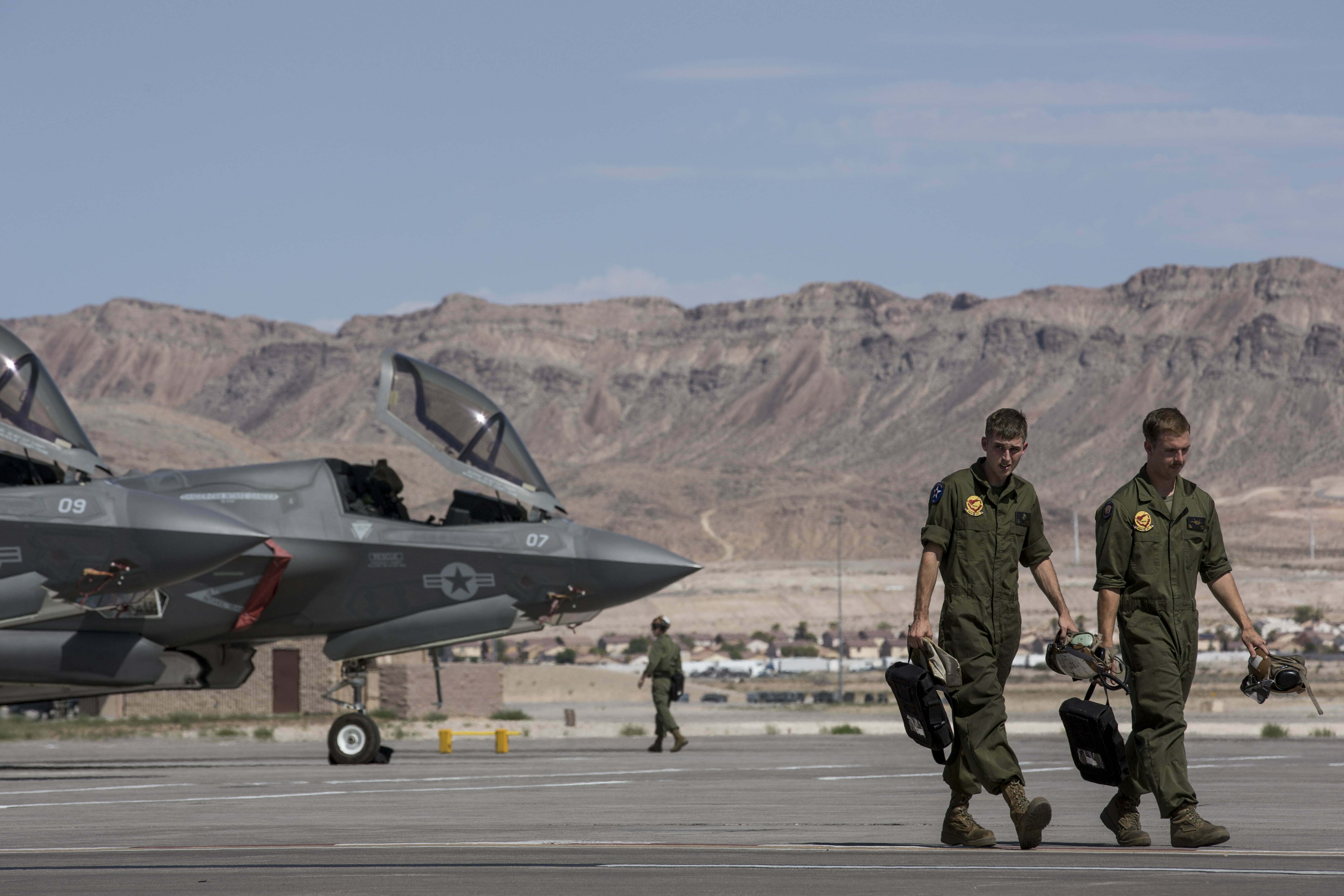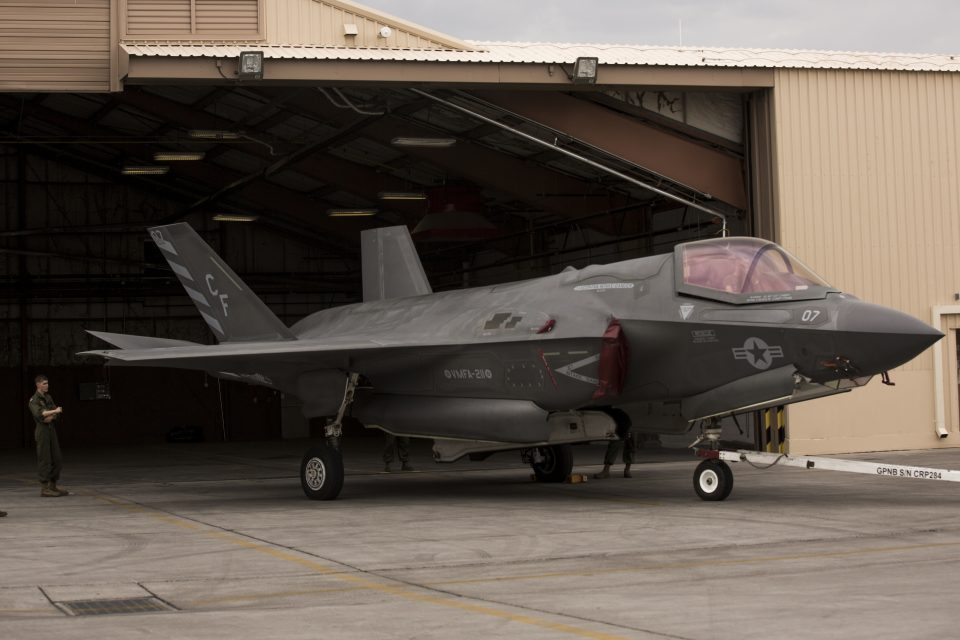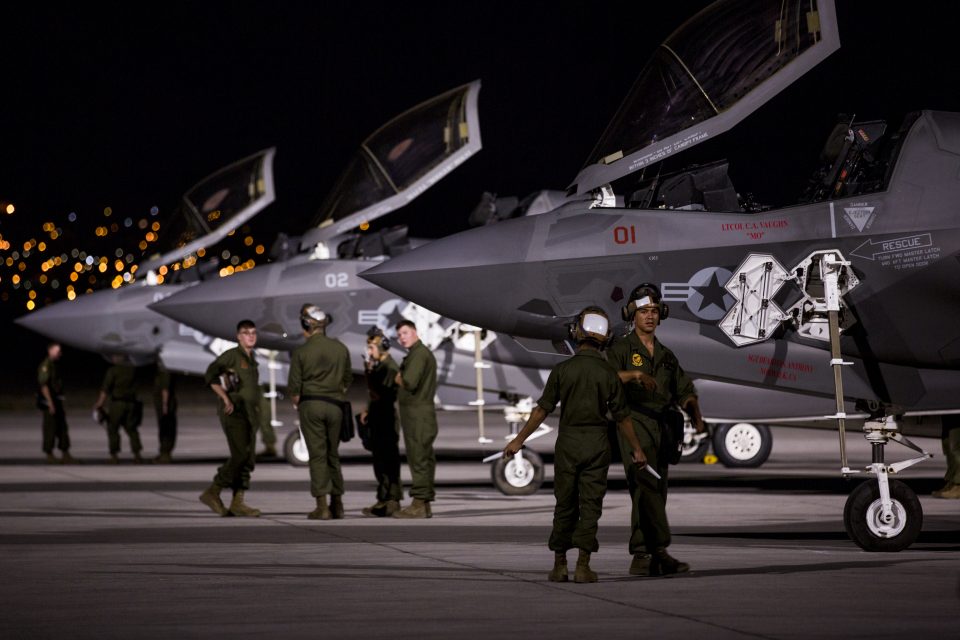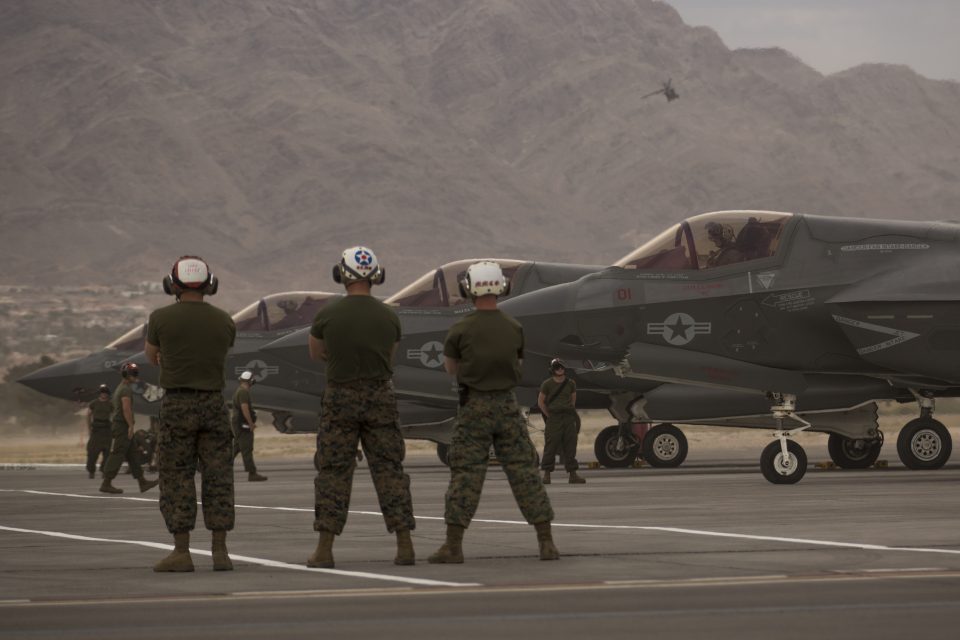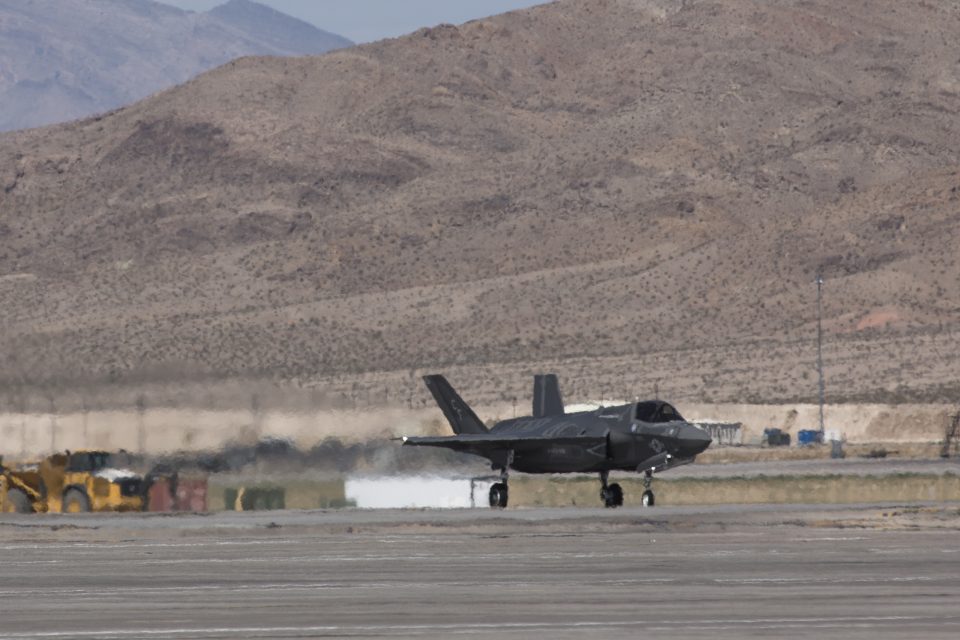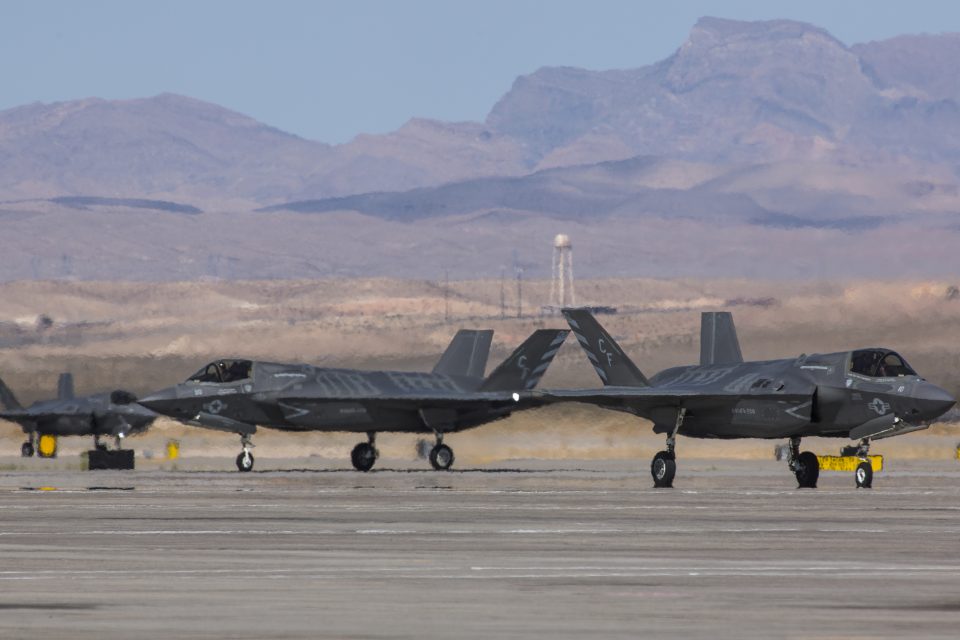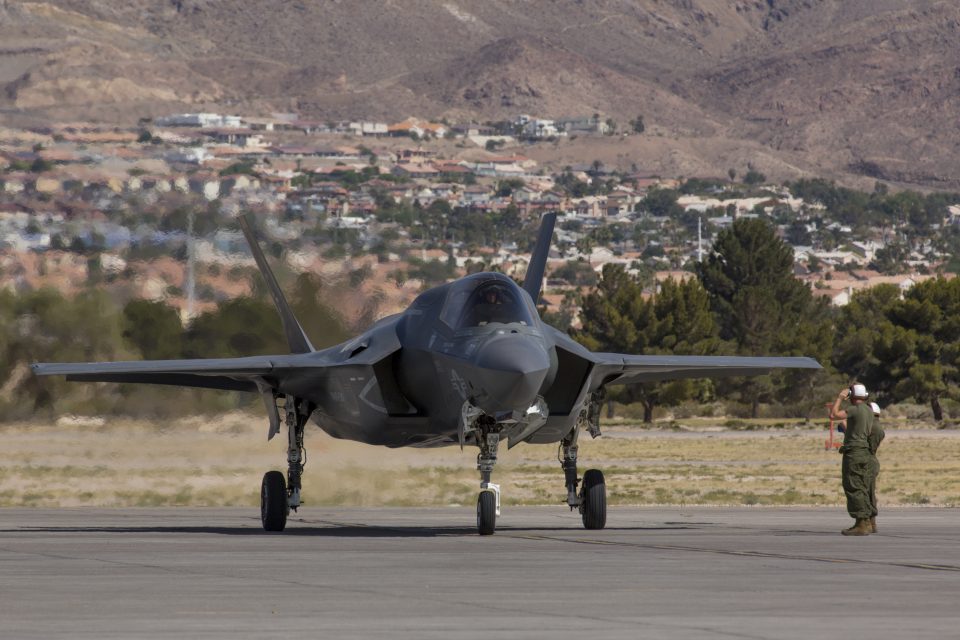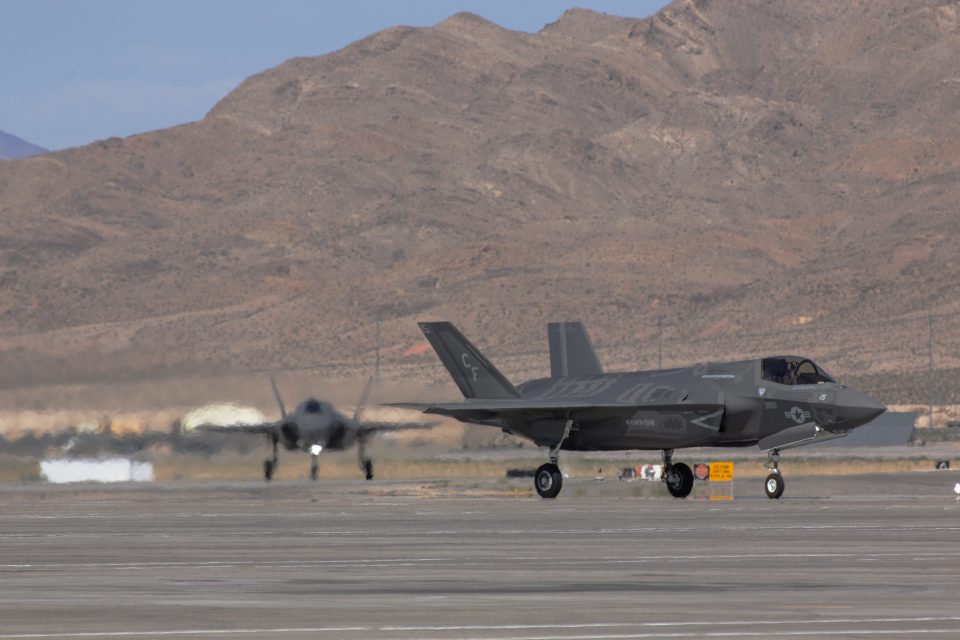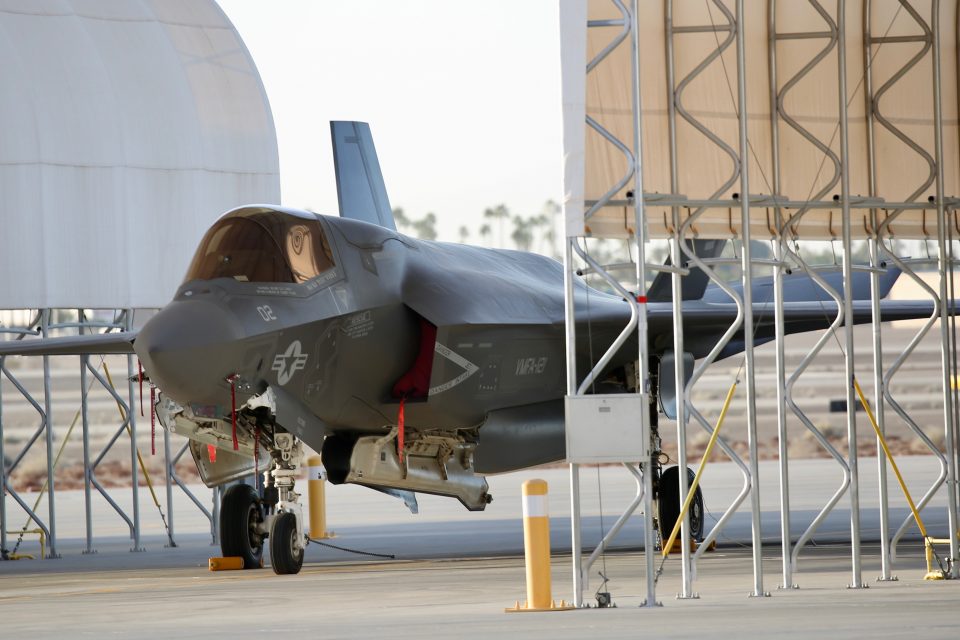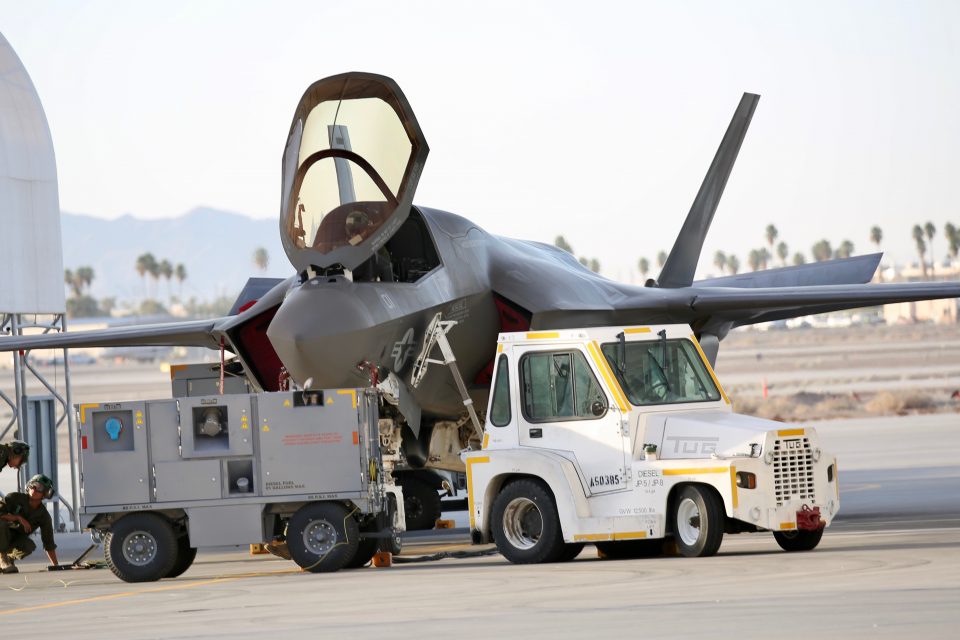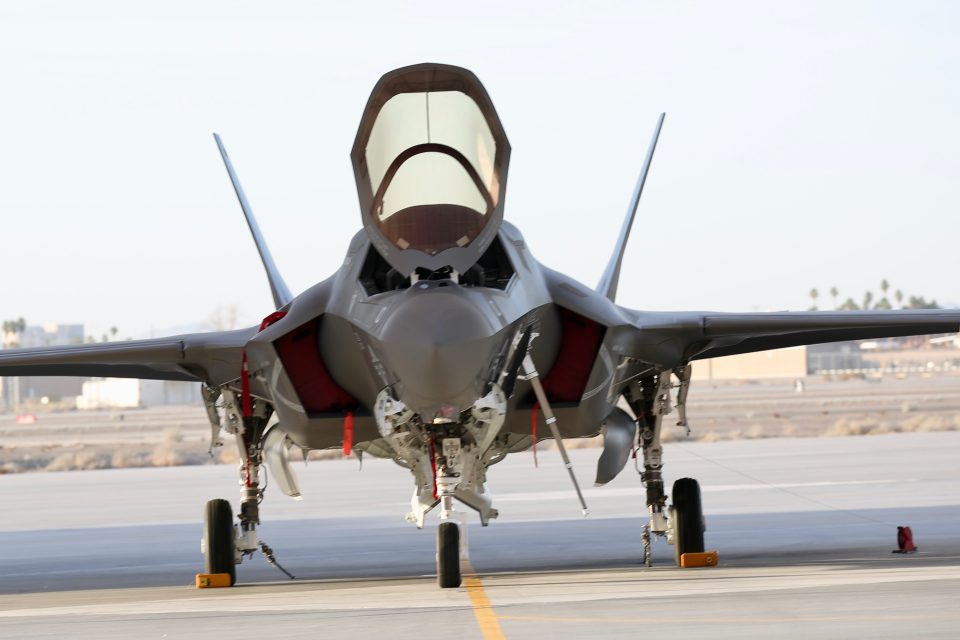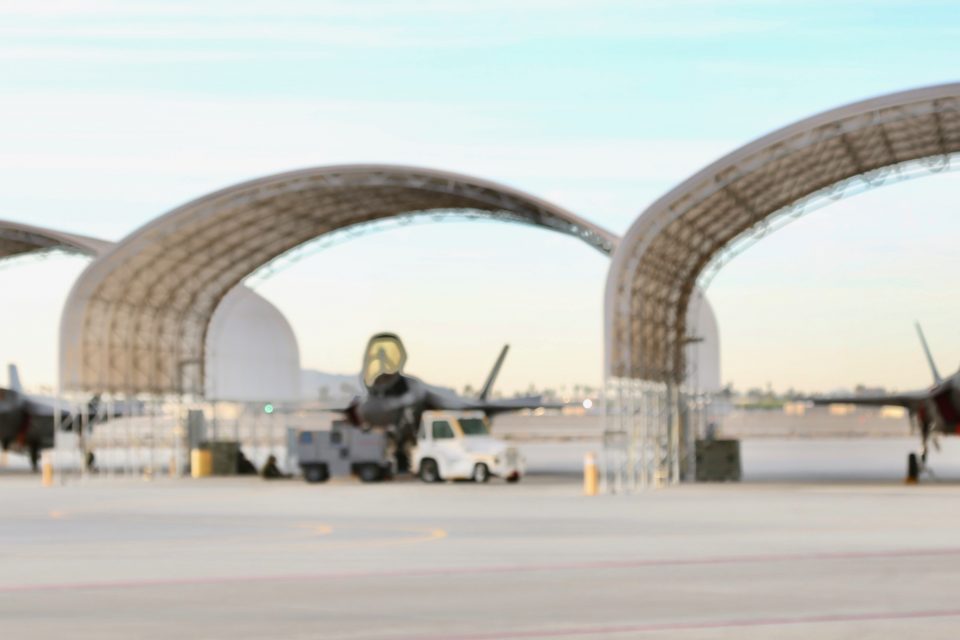2017-07-29: Marine Fighter Attack Squadron (VMFA) 211 “Wake Island Avengers,” 3rd Marine Aircraft Wing, participate in Red Flag 17-3 at Nellis Air Force Base, Nev., July 10 to 28.
Red Flag 17-3 is a realistic combat training exercise involving the U.S. Air Force, Army, Navy and Marine Corps and this iteration is the first to have both the Air Force’s F-35A Lightning II and the Marine Corps’ F-35B Lightning II, which is capable of short takeoff vertical landing (STOVL).
Looking at Red Flag 17-3 from a Marine Corps Point of View from SldInfo.com on Vimeo.
The Marines have had operational F-35s longer than the USAF and with their deployment to Japan are providing a significant input into the way ahead with a fifth generation enabled combat force.
NELLIS AIR FORCE BASE, NV, UNITED STATES
07.12.2017
Video by Sgt. Lillian Stephens
Marine Corps Air Station Miramar / 3rd Marine Aircraft Wing
Editor’s Note: Earlier, we discussed the first appearance of the F-35B at Red Flag with the skipper of the Green Knights prior to his departure for Japan.
2017-01-02 By Ed Timperlake and Robbin Laird
We last visited VMF-121 prior it being declared IOC with the F-35B.
That visit was in the Summer of 2014 and we spent time the then XO of the Squadron, Major Summa, now Lt. Col. Summa and the CO of the Beaufort Squadron of F-35s, namely the Warlords of Marine Fighter Attack Training Squadron 501, which we have also visited.
https://sldinfo.com/visiting-mcas-beaufort-air-station-f-35b-and-renorming-airpower/
During our most recent visit to MCAS Yuma we had a chance to visit both of the IOC F-35B squadrons in Marine Aircraft Group-13.
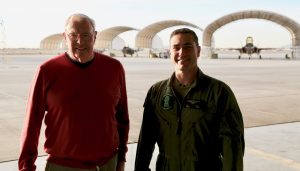
We also visited with MAWTS-1 and VMX-1, who have just returned from DT-III testing onboard the USS America.
The first F-35B IOC squadron in the world, VMF-121, the Green Knights, are in the processing of transitioning to their deployment in Japan.
Equipment and personnel are already on the way to Japan and the squadron will fly out this winter across the Northern Pacific to operate from Japan.
The deployment comes at a crucial time, given ongoing developments in the Pacific, and the opportunity to be combat operational with F-22s in Pacific Defense.
The F-35B will continue with this new generation of a V/STOL aircraft to work its flexibility with regard to ships and landing bases, which do not necessarily have to be regular airfields.
The flexibility which the B provides is an inherent advantage in the Pacific, with its rich tapestry of islands from which to operate to have the unique “F/A/E -35B” integrate into the emerging Kill Webs as expressed by Rear Admiral Manzer.
http://breakingdefense.com/2016/10/rear-adm-manazir-speaks-on-allied-force-transformation-a2ad/
We had a chance to talk with Lt. Col. Bardo, the CO of the squadron, who is taking the squadron to Japan but will soon thereafter transition from the squadron.
But Bardo has been with the squadron during its IOC and work up with the Marine Corps for its deployment to Japan.
He and his squadron are performing key historical tasks as the cutting edge operational F-35 squadron in the world.
This is an unusual situation for the Marines to find themselves in terms of combat air, but the flexibility of a combat information dominance aircraft fits right in with the evolving concepts of operations of the Marines.
Lt. Col. Bardo underscored the importance of Close Air Support for Marines and the role which the F-35 can play in significantly expanding the scope and nature of close air support.
“CAS is considered doctrinally a function which operates only in a permissive air environment.
We can expand CAS to deal with a much wider range of situations than when we would simply operate in a permissive air environment.
And we can provide greater assurance to Marines as they deploy on the ground that we can deal with a much wider array of pop-up threats than we could do with legacy aircraft.”
Lt. Col. Bardo described the path to get to where the squadron was right now as it prepared for its Japanese deployment.
The period since declaring IOC has been a busy and challenging one as the squadron pushed out the boundaries of the operational capabilities of the aircraft and worked with MAGTF to integrate the airplane into the CAS role as well as working with the USAF on the air to air missions as well.
It has been a busy period for Bardo and his squadron but certainly historic as well.
Throughout the squadron has found the core capabilities of the aircraft to be a solid foundation for shaping the way ahead.
As Lt. Col Bardo described the F-35:
“For the pilot, the ability to shift among missions without having to think sequentially about doing so is really a key strength of the aircraft.
The airplane can think CAS and air-to-air at the same time and the pilot can then mix and match as the mission demands rather than having to think through the sequence of going from one mission set to the next.”
In broad terms, Lt. Col. Bardo described the progress of the squadron going from its time at 29 Palms working CAS, to working closely with MAWTS-1 on shaping the tactics for the use of the aircraft in support of the MAGTF, to its participation in Red Flag this summer as the F-35 component of the air operations being exercised at Red Flag.
In total, these experiences have been crucial in preparing the squadron for its deployment to Japan.
With regard to 29 Palms, the support to the ground combat element was the focus of attention in Steel Knight 2016, which included operating from Red Beach, an austere combat training facility where the presence of FOD or ground debris is a challenge.
https://sldinfo.com/vmfa-121-at-red-beach/
https://sldinfo.com/steel-knight-16-a-step-for-vmfa-121-on-the-way-to-japan-in-2017/
“At the exercise we could show Marines that the F-35 is a core asset for expanding the operational environment in which the MAGTF could operate and how we can support the GCE.
We built trust in the infantry in what this revolutionary STOVL asset can bring to the force and to enhance their lethality and survivability as well.”
With MAWTS-1, the squadron has worked closely on shaping the tactics and training for the new aircraft.
The MAWTS-1 F-35 instructors have come from VMF-121, and the synergy has been crucial to shaping the way ahead for VMF-121 as it faces its deployment to Japan.
Then this summer, the squadron sent planes to Red Flag and flew in a US-only exercise with the full panoply of USN and USAF aircraft, excluding the F-15s.
There the USMC flew its jets and were part of reshaping of air to air operations associated with the F-35.
Lt. Col. Bardo noted that there were many F-16 National Guard pilots who were there, some of which had flown with the F-22 but had not flown with the F-35.
They soon learned that you did not want to be an adversary but to leverage what the F-35 brought the fight…..
Editor’s Note: The first slideshow shows the Marines at the current Ref Flag; the other two show them at last year’s Red Flag and the photos are credited to the USMC.


